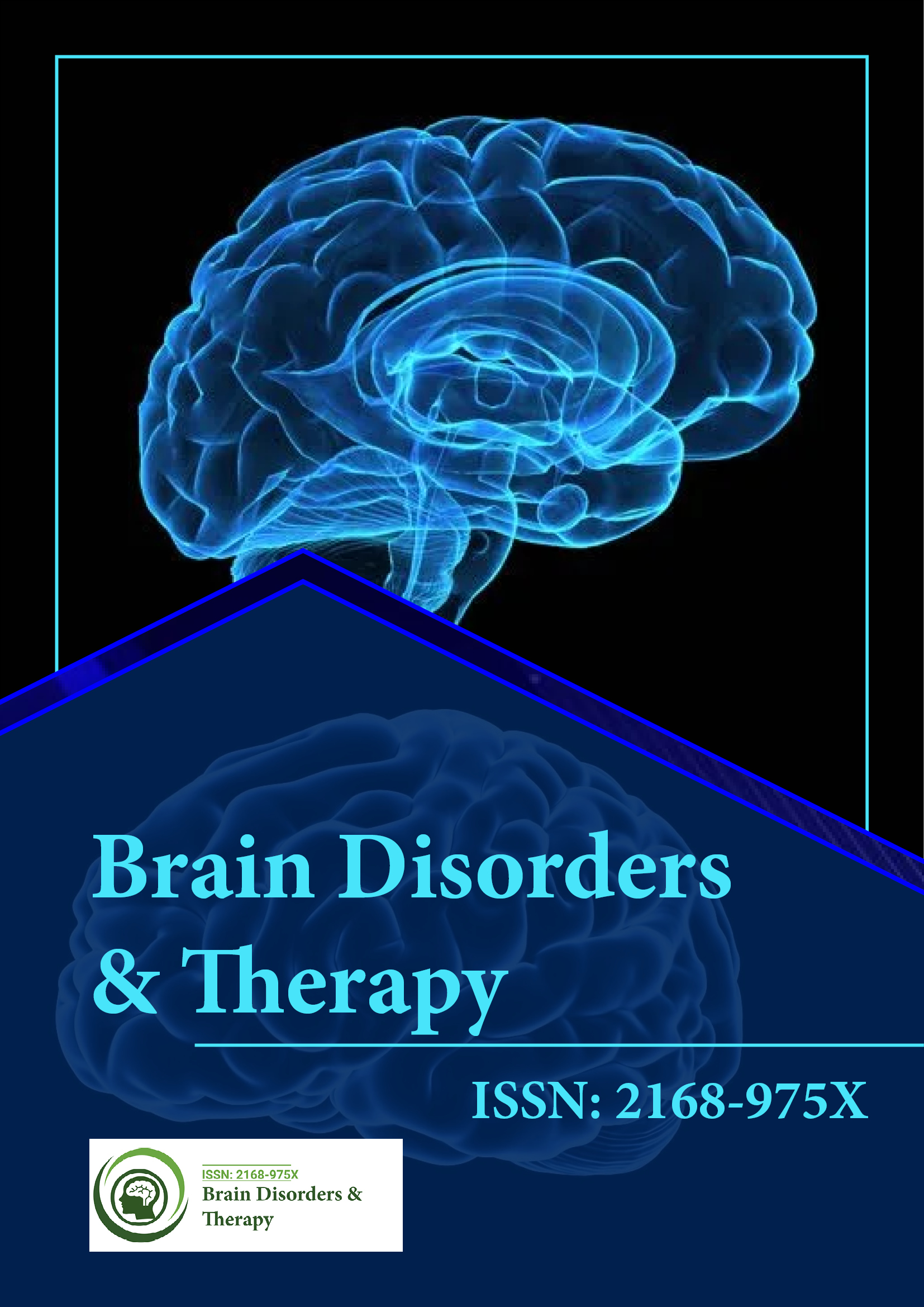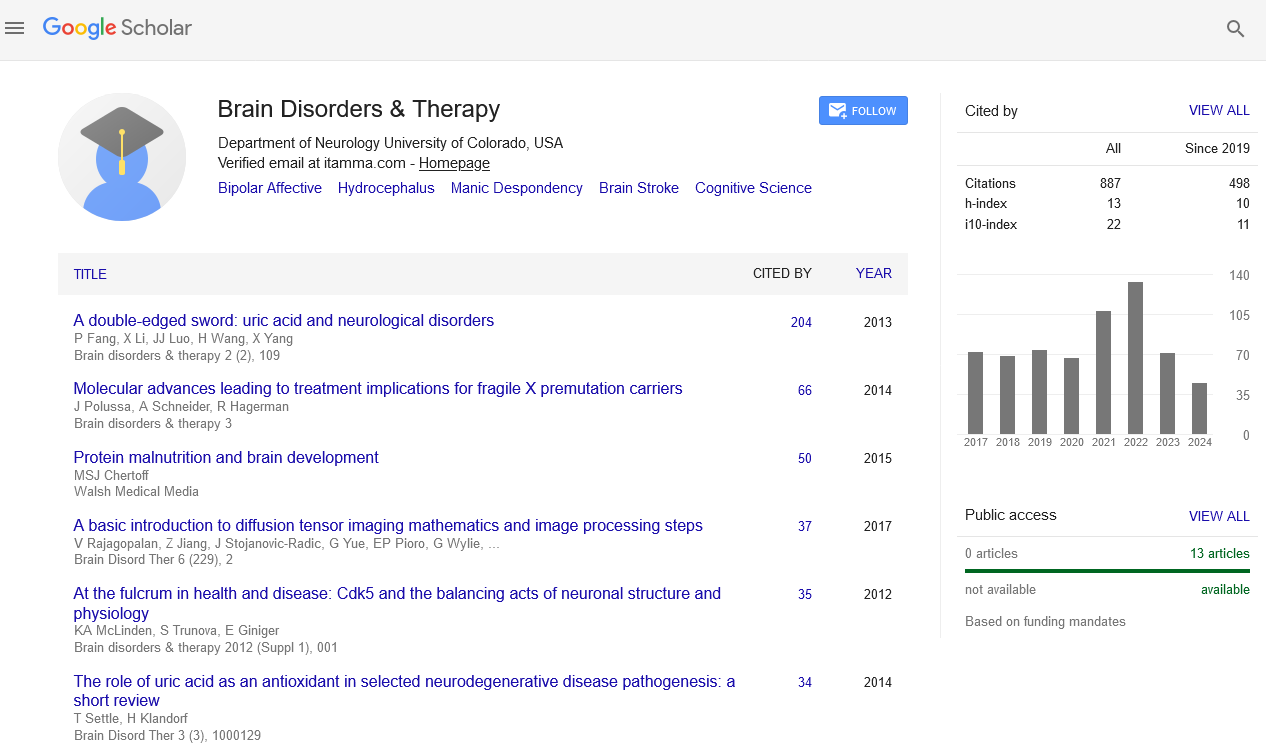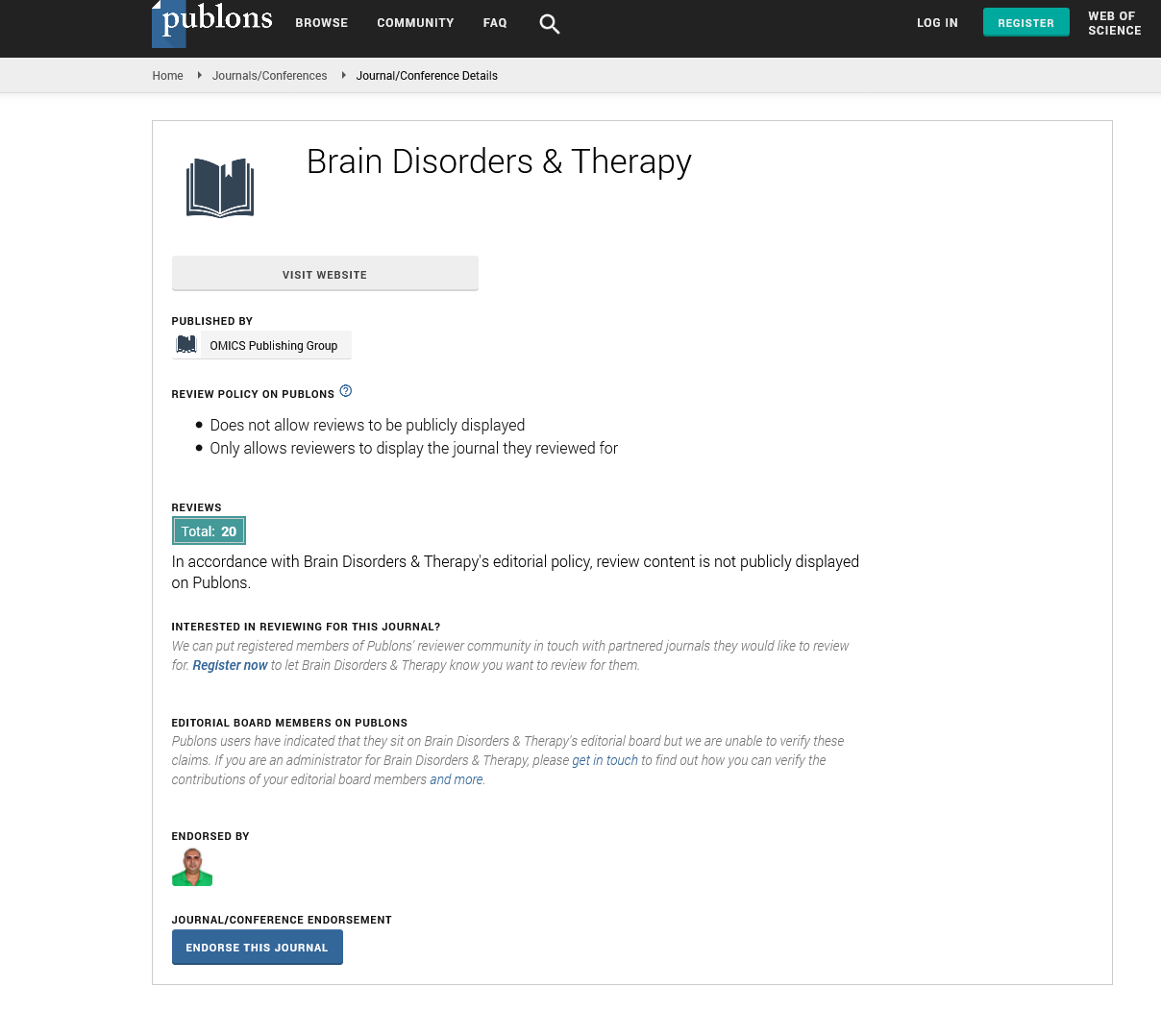Indexed In
- Open J Gate
- Genamics JournalSeek
- JournalTOCs
- RefSeek
- Hamdard University
- EBSCO A-Z
- OCLC- WorldCat
- Publons
- Geneva Foundation for Medical Education and Research
Useful Links
Share This Page
Journal Flyer

Open Access Journals
- Agri and Aquaculture
- Biochemistry
- Bioinformatics & Systems Biology
- Business & Management
- Chemistry
- Clinical Sciences
- Engineering
- Food & Nutrition
- General Science
- Genetics & Molecular Biology
- Immunology & Microbiology
- Medical Sciences
- Neuroscience & Psychology
- Nursing & Health Care
- Pharmaceutical Sciences
Tumor suppressor WWOX limits neurodegeneration and Zfra mitigates the symptoms of Alzheimerâ??s disease
International Conference on Brain Disorders & Therapeutics
August 24-26, 2015 London, UK
Nan-Shan Chang, Jean-Yun Chang, Ming-Hui Lee and Sing-Ru Lin
National Cheng Kung University, Taiwan
Scientific Tracks Abstracts: Brain Disord Ther
Abstract:
Substantial evidence reveals that tumor suppressor WW domain-containing oxidoreductase (known as WWOX, FOR or WOX1) blocks the progression of Alzheimer�??s disease (AD). We have first demonstrated that WWOX binds tau and tauhyperphosphorylating enzymes GSK3β, ERK and JNK1 and thereby inhibits tau hyperphosphorylation. In addition, WWOX promotes neuronal differentiation. Unfortunately, WWOX is frequently down-regulated in the AD hippocampi. And this downregulation results in spontaneous aggregation of TIAF1 and TRAPPC6A�? which leads to caspase activation, tau aggregation, APP degradation, formation of amyloid β and plaques in humans and in Wwox gene knockout mice. When WWOX protein is lost due to alteration of WWOX/Wwox gene such as missense or nonsense mutation and deletion, this leads to ataxia, epilepsy, dementia, neurodegeneration, diseases associated with HDL lipid metabolism and early death in humans, mice and rats. Our studies revealed that significant up-regulation of proteins which are involved in neurodegeneration is found in the cortex and hippocampus of Wwox gene knockout mice. These proteins include; GSK3�?, ERK, pERK, JNK1, pJNK1, TIAF1, pS35-TIAF1, TRAPPC6A�?, pS37-TRAPPC6A�?, α-synuclein, C9orf72, TDP-43 and others. Notably, a zinc finger-like peptide Zfra is able to ameliorate the symptoms of AD in the triple transgenic mice including neuronal death and memory and learning capabilities suggesting its potential use in therapy for AD.
Biography :
Email: nschang13827@gmail.com


